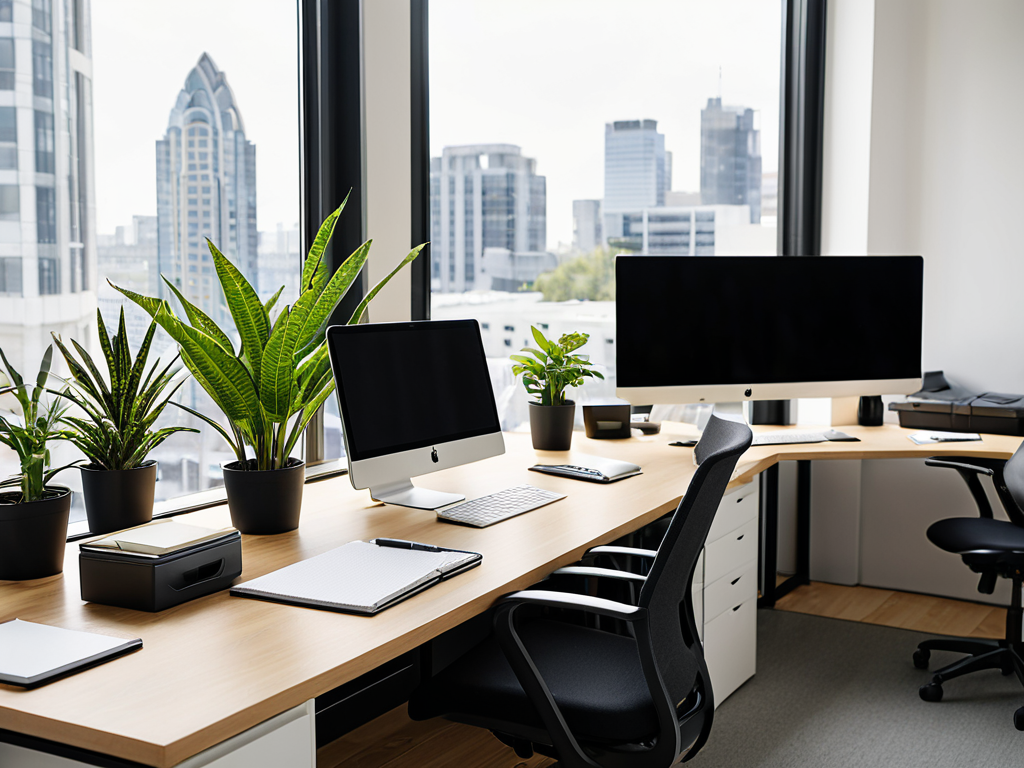I still remember the days when I thought Workplace productivity was all about fancy tools and expensive software. But let me tell you, after years of trial and error, I’ve come to realize that most of those solutions are just a waste of time and money. They promise the world, but in reality, they just add to the noise and distractions that already plague our workplaces. It’s time to cut through the hype and get back to basics. Real productivity isn’t about gimmicks; it’s about focusing on what truly matters.
In this article, I’ll share my no-nonsense approach to boosting Workplace productivity. I’ll give you the same advice I’d give to a friend: ditch the fluff, prioritize what really needs to get done, and learn to say no to non-essential tasks. My goal is to provide you with practical, experience-based tips that you can apply immediately to supercharge your team’s productivity. I’m not promising any magic bullets or overnight successes, but I am promising that if you follow my lead, you’ll see a significant improvement in your workplace’s efficiency and morale. So, let’s get started and uncover the secrets to unlocking your team’s full potential.
Table of Contents
Boosting Workplace Productivity

To truly supercharge your team’s performance, it’s essential to focus on minimizing workplace distractions. This can be as simple as implementing noise-cancelling headphones or designating certain areas as quiet zones. By doing so, employees can better concentrate on their tasks, leading to increased efficiency and accuracy.
Effective meeting management is another crucial aspect of boosting team performance. Streamlining meetings to only include necessary attendees and setting clear agendas can help prevent unnecessary time wastage. Additionally, prioritization techniques for tasks can be applied to ensure that each team member is working on the most critical tasks, thereby maximizing overall output.
By striking a balance between work and personal life, teams can experience a significant surge in motivation and energy. Implementing work life balance strategies, such as flexible working hours or remote work options, can help reduce burnout and increase job satisfaction. This, in turn, can lead to a more cohesive and driven team, ultimately driving success in the organization.
Effective Meeting Management Tips
To supercharge your team’s productivity, it’s essential to look at how meetings are managed. Streamlining meetings can save a significant amount of time and energy. By setting clear agendas and sticking to them, you can ensure that everyone is on the same page and that discussions remain focused.
Implementing timeboxing for each topic can also help keep meetings on track. This involves allocating a specific amount of time for each discussion point, preventing conversations from meandering off course. By doing so, you can make the most out of your meetings and avoid unnecessary extensions.
Minimizing Distractions for Focus
To stay on track, it’s essential to identify potential distractions and eliminate them. This can be as simple as turning off notifications on your phone or finding a quiet spot to work. By doing so, you can create an environment that fosters focus and helps you stay concentrated on the task at hand.
As you’re working on supercharging your team’s productivity, it’s essential to stay up-to-date with the latest trends and best practices in office design and management. For instance, incorporating ergonomic furniture into your workspace can significantly boost employee comfort and focus. If you’re looking for inspiration or guidance on how to create a more efficient and comfortable work environment, I’ve found that browsing through websites like casualaustralia can be really helpful – they have a wide range of articles, tips, and product suggestions that can help you create a workspace that’s both stylish and functional.
A key strategy for minimizing distractions is to prioritize your tasks and break them down into manageable chunks. This allows you to focus on one task at a time, reducing the likelihood of multitasking and increasing productivity.
Optimizing Office Efficiency

To create a seamless and efficient work environment, it’s essential to focus on office ergonomics for comfort. This involves designing a space that promotes physical and mental well-being, allowing employees to stay focused and energized throughout the day. By incorporating elements such as natural light, comfortable seating, and minimal noise pollution, businesses can significantly reduce distractions and improve overall job satisfaction.
Effective use of team collaboration tools is also crucial for optimizing office efficiency. These tools enable employees to share information, coordinate tasks, and communicate effortlessly, thereby streamlining workflows and reducing unnecessary meetings. By leveraging technology to facilitate collaboration, businesses can foster a sense of unity and cooperation among team members, leading to increased productivity and better outcomes.
By implementing prioritization techniques for tasks, employees can better manage their workload and minimize stress. This involves identifying critical tasks, setting realistic deadlines, and allocating sufficient time for each project. By doing so, employees can maintain a healthy work life balance, which is essential for sustaining long-term productivity and job satisfaction.
Ergonomic Offices for Comfort
Creating an ergonomic office space is crucial for employee comfort and overall productivity. Proper seating and desk arrangements can significantly reduce eye strain, back pain, and other work-related health issues. By investing in ergonomic furniture, businesses can promote a healthier work environment, leading to increased job satisfaction and reduced absenteeism.
A well-designed office layout can also boost morale by providing a sense of comfort and relaxation. This, in turn, can lead to improved focus, creativity, and collaboration among team members, ultimately driving business success.
Prioritizing Tasks With Ease
To prioritize tasks efficiently, it’s essential to understand that not all tasks are created equal. Some tasks may have minimal impact on the overall project, while others can make or break the deadline. By identifying the high-priority tasks, you can allocate your time and resources accordingly.
Effective task prioritization involves breaking down large tasks into smaller, manageable chunks, making it easier to focus on one task at a time. This approach helps to reduce stress and increase productivity, allowing you to tackle each task with clarity and precision.
Supercharging Your Workflow: 5 Essential Tips
- Set clear and achievable goals to maintain focus and direction
- Implement a ‘single-tasking’ approach to minimize multitasking and maximize output
- Establish a regular ‘feedback loop’ to monitor progress and adjust strategies as needed
- Create a ‘stop doing’ list to eliminate non-essential tasks and reduce workload
- Schedule regular ‘productivity breaks’ to recharge and avoid burnout
Key Takeaways to Supercharge Your Workspace
By minimizing distractions and implementing effective meeting management, teams can unlock a significant boost in productivity and focus
Prioritizing tasks and designing ergonomic offices can dramatically enhance employee comfort and efficiency, leading to better work outcomes
By applying these strategies, organizations can transform their work environments into supercharged productivity powerhouses, where employees thrive and business goals are achieved with ease
Unlocking Human Potential
Productivity isn’t just about getting more done, it’s about creating a work environment where people can thrive, focus, and unleash their inner genius.
Alec Thompson
Unlocking the Secrets to a More Productive You

In the pursuit of maximizing workplace productivity, it’s essential to remember that every small change adds up. From minimizing distractions and implementing effective meeting management strategies, to prioritizing tasks and creating an ergonomic office space, each element plays a crucial role in supercharging your team’s performance. By focusing on these key areas and making a conscious effort to optimize office efficiency, you’ll be well on your way to creating a more productive and successful work environment. Whether you’re a team leader or an individual contributor, the power to drive positive change and boost productivity lies within your grasp.
As you embark on this journey to unlock your full potential, remember that the true secret to workplace productivity lies not in grand, sweeping changes, but in the small, incremental wins that add up over time. By staying committed to your goals, embracing a growth mindset, and continually seeking out new ways to improve and optimize your workflow, you’ll be amazed at what you can achieve. So don’t be afraid to think outside the box, challenge the status quo, and push yourself to new heights – the results will be well worth the effort, and you’ll be unleashing your team’s inner productivity powerhouse in no time.
Frequently Asked Questions
How can I effectively balance individual productivity with team collaboration in a busy office environment?
To balance individual productivity with team collaboration, set clear goals and expectations, then give team members the autonomy to manage their workload. Encourage open communication and regular check-ins to ensure everyone’s on the same page, without micromanaging or disrupting focused worktime.
What role does technology play in enhancing or hindering workplace productivity?
Technology can be a double-edged sword – it can supercharge productivity with tools like project management software and automation, but it can also be a major distraction with social media and endless notifications. Finding the right balance is key to harnessing its power.
Are there any specific productivity metrics or KPIs that businesses should track to measure success?
To really gauge productivity, track key metrics like employee engagement, project completion rates, and time-to-task ratios – these will give you a honest snapshot of how your team’s doing and where to improve.

